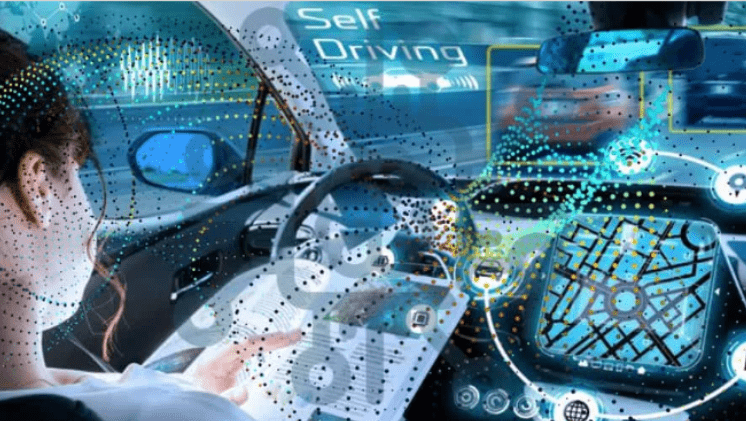The advent of autonomous vehicles (AVs) marks a significant transformation in the transportation landscape. From self-driving cars to trucks and delivery drones, autonomous vehicles are poised to revolutionize the way we travel, transport goods, and interact with the world around us. This article explores how autonomous vehicles are changing transportation, from the benefits they offer to the challenges they present, as well as the impact on society and the future of mobility.
The Rise of Autonomous Vehicles
What Are Autonomous Vehicles?
Autonomous vehicles (AVs) are vehicles that can operate without human intervention by utilizing a combination of sensors, artificial intelligence (AI), machine learning, and sophisticated algorithms. These vehicles are designed to perceive their environment and make decisions, such as navigating roads, avoiding obstacles, and adhering to traffic rules, all on their own. AVs range from self-driving cars to trucks and drones that can perform a variety of tasks traditionally carried out by human drivers.
The technology behind AVs has been advancing rapidly, driven by both tech giants and traditional automakers. Companies like Waymo, Tesla, and Uber have been at the forefront of developing autonomous driving systems that promise to make transportation safer, more efficient, and ultimately more convenient.
How Do Autonomous Vehicles Work?
Autonomous vehicles use an array of sensors and technologies, such as LIDAR (Light Detection and Ranging), radar, cameras, and ultrasonic sensors, to detect the surrounding environment. These sensors provide real-time data to the vehicle’s onboard computer systems, which use machine learning algorithms to process this information and make driving decisions. The data is constantly updated and analyzed, allowing the vehicle to detect obstacles, other vehicles, pedestrians, and even road signs.
The development of these systems involves an immense amount of data collection and testing. AVs are trained to understand different driving scenarios, including complex urban environments and highways. In combination with artificial intelligence, AVs can learn from vast datasets, continually improving their performance and safety.
How Autonomous Vehicles Are Impacting Transportation
Enhanced Road Safety
One of the key promises of autonomous vehicles is their potential to improve road safety. Human error is responsible for the majority of traffic accidents, with factors like distracted driving, fatigue, and poor decision-making playing significant roles. By removing the human element from the driving process, AVs are expected to significantly reduce accidents.
The sensors and technologies in AVs can process information much faster than a human driver, enabling quicker responses to potential hazards. For example, AVs can react to a sudden pedestrian crossing the road or a car slamming on its brakes much faster than a human could. Furthermore, autonomous vehicles are designed to adhere to traffic laws and follow optimal driving patterns, reducing the likelihood of accidents caused by speeding, tailgating, or reckless driving.
Reducing Traffic Congestion
Traffic congestion is a major issue in cities worldwide, leading to increased travel times, fuel consumption, and air pollution. Autonomous vehicles have the potential to alleviate these issues. By improving traffic flow and optimizing driving patterns, AVs can reduce congestion.
For example, AVs can communicate with each other and traffic infrastructure to coordinate movements, reducing the need for abrupt stops and starts. This could lead to smoother traffic, fewer bottlenecks, and more efficient use of road space. In addition, smart traffic management systems powered by AI could further optimize traffic patterns in cities, reducing delays and improving overall mobility.
Environmental Impact
The environmental benefits of autonomous vehicles are also noteworthy. AVs are often designed to be electric vehicles (EVs), which have a much lower environmental footprint compared to traditional gasoline-powered cars. By reducing the number of internal combustion engines on the road, autonomous vehicles can help lower greenhouse gas emissions, contributing to cleaner air and a reduction in climate change.
Additionally, autonomous vehicles’ ability to drive more efficiently can lead to better fuel economy. For example, AVs can optimize speed, reduce idling time, and maintain constant speeds, all of which contribute to lower energy consumption.
The Economic Impact of Autonomous Vehicles
Job Displacement and Creation
The introduction of autonomous vehicles will have a profound effect on the job market, particularly for drivers. Jobs that involve driving, such as those in transportation, delivery services, and ride-hailing, may be at risk due to automation. Truck drivers, for example, make up a significant portion of the workforce in many countries, and the widespread adoption of autonomous trucks could result in job losses in this sector.
However, this shift also creates new opportunities. As the demand for autonomous vehicle technology grows, there will be a need for engineers, data scientists, robotics specialists, and other skilled professionals to develop, test, and maintain these systems. Additionally, new business models, such as autonomous ride-sharing and mobility-as-a-service (MaaS), could emerge, offering new forms of employment and economic activity.
Impact on the Automotive Industry
The rise of autonomous vehicles is reshaping the automotive industry. Traditional car manufacturers are increasingly investing in AV technology, while new players, such as tech companies and startups, are also entering the market. This has led to increased competition and innovation in the automotive sector.
The development of autonomous vehicles has also sparked the growth of new industries, including mobility services and autonomous delivery solutions. Companies like Waymo and Cruise are working on autonomous taxis, while other startups focus on delivering goods using self-driving vehicles. This shift is leading to the creation of new business models and potentially disrupting traditional transportation networks.
Ethical and Legal Considerations
Liability and Insurance
As autonomous vehicles become more widespread, new questions arise regarding liability and insurance. In the event of an accident involving an AV, who is responsible—the manufacturer, the software developer, or the vehicle owner? These questions are complex and still being debated by policymakers and legal experts.
To address these issues, insurance companies will need to adapt to the new landscape of autonomous driving. Traditional insurance models may no longer be sufficient, and new policies will need to be developed to account for the unique aspects of autonomous vehicle technology, including software failures, cybersecurity risks, and interactions between human drivers and autonomous vehicles.
Ethical Decision-Making in AVs
Another ethical concern involves the decision-making processes of autonomous vehicles. In scenarios where an accident is unavoidable, how should an AV decide which course of action to take? These types of ethical dilemmas have been explored in the field of autonomous vehicle development, often referred to as the trolley problem.
Developers of autonomous vehicles are working to incorporate ethical frameworks into the decision-making algorithms of these vehicles, but it remains an ongoing challenge. Decisions about how AVs should prioritize human lives, minimize harm, and ensure fairness will be crucial as the technology becomes more mainstream.
The Future of Autonomous Vehicles
Integration into Public Transportation
Autonomous vehicles are not only changing personal transportation but also public transit systems. In the future, we could see autonomous buses and shuttle services operating in cities, providing a convenient, efficient, and environmentally friendly way to travel. These vehicles could be integrated into existing public transportation networks, offering an additional layer of flexibility for commuters.
Additionally, autonomous vehicles could support last-mile delivery solutions, helping to bridge the gap between public transit stations and people’s homes. This would improve access to transportation for individuals who live in areas not currently served by traditional public transit.
The Role of Smart Cities
As cities become more connected and smart, autonomous vehicles will play a critical role in shaping urban mobility. Smart cities are equipped with sensors, data networks, and AI-powered systems that optimize infrastructure and services. Autonomous vehicles will work in harmony with these systems, providing seamless transportation experiences for residents.
In smart cities, AVs will communicate with traffic lights, parking meters, and other infrastructure to create a more efficient, coordinated transportation system. This integration will further enhance the benefits of autonomous vehicles, from reducing traffic congestion to minimizing environmental impact.
FAQs
- What are autonomous vehicles?
- Autonomous vehicles are self-driving vehicles that use sensors, AI, and machine learning to navigate and make decisions without human intervention.
- How do autonomous vehicles work?
- Autonomous vehicles use sensors like LIDAR, radar, and cameras to detect their environment. These sensors feed data to the vehicle’s onboard computer, which makes decisions based on the information gathered.
- What are the benefits of autonomous vehicles?
- Benefits include enhanced road safety, reduced traffic congestion, environmental impact reduction, and increased economic efficiency in sectors such as logistics and transportation.
- What challenges do autonomous vehicles face?
- Autonomous vehicles face challenges related to ethics, liability, insurance, and regulatory frameworks. There are also concerns about job displacement for drivers.
- How will autonomous vehicles affect the job market?
- Autonomous vehicles will disrupt jobs in the driving sector but will create new jobs in technology, engineering, and autonomous vehicle support industries.
- What role will autonomous vehicles play in public transportation?
- Autonomous vehicles will integrate into public transit systems, offering convenient, efficient, and environmentally friendly transportation options like autonomous buses and shuttle services.



